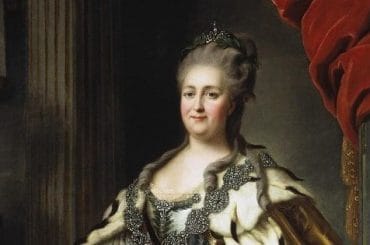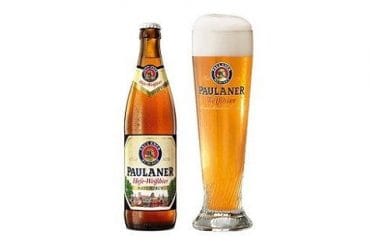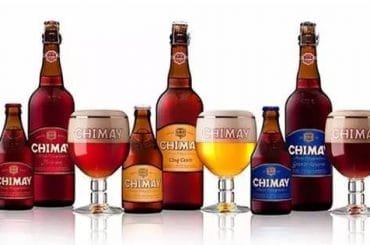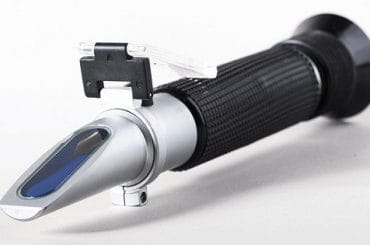This post is also available in:
Español
Português
Writer, scientist, composer, and physician, among other things, Hildegard of Bingen (1098-1179) was a brilliant German woman who first documented the qualities of hops as a beer ingredient in her book “Physica sive Subtilitatu“.
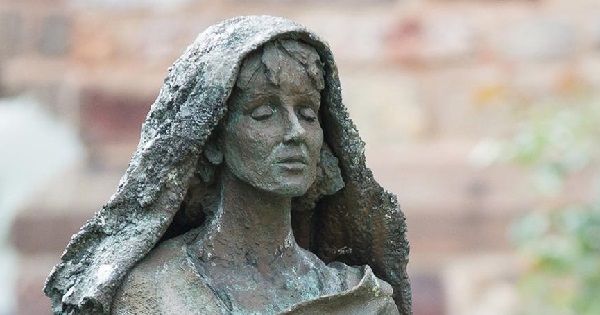
Of noble origin, Hildegard was the youngest of ten siblings and always had poor health, which led her family to place her in the care of the Benedictine abbey of Disibodenberg at the age of fourteen.
At that time, her education was entrusted to Abbess Jutta Spanheim, who initially trained her in subjects such as Latin, Greek, music, botany, and theology.
In 1116, when she had turned eighteen, Hildegard decided to take vows in the Benedictine order that had sheltered her for four years. After 20 years in the convent, following the death of her tutor and the abbess of the convent, she was appointed abbess at age 38.
From that period onward, Hildegard of Bingen began intense intellectual activity, eventually publishing up to nine volumes on different areas of knowledge: mysticism, theology, medicine, botany, and music.
She became known as the “Sibyl of the Rhine” and the “Teutonic prophetess,” as she possessed extraordinary intelligence and culture that made her one of the most influential, multifaceted, and fascinating figures of the Middle Ages and Western history.
Contenido
Hildegard of Bingen and Hops in Beer
A century before her birth, many monks and nuns were already expert beer brewers, often consuming it during fasting periods.
Its nutritional qualities made it a kind of liquid bread that, over the centuries, had gained momentum through its production and consumption in monasteries, becoming a very popular beverage.

But at that time, beer did not use hops in its production but rather a special blend of aromatic herbs called gruit.
According to beer historian Richard Unger, while there is evidence of hop use in beer in northern Germany as early as the 6th century, it wasn’t until around 1150 that Hildegard of Bingen documented its use for the first time, describing the two main qualities of hops.
The hop plant is warm and dry, has moderate moisture, and is not very useful for benefiting man because it increases his melancholy, saddens the soul, and weighs down his internal organs. But, nevertheless, due to its own bitterness, it prevents some putrefactions in beverages to which it can be added, allowing them to last much longer.
After this, it took more than three centuries for brewers to begin using hops en masse in southern Germany in the 15th century.
As the beer-making process scaled up and the need to transport it for consumption in more distant places arose, there was a greater need for preservation, and it was precisely here that Hildegard’s vision became reality—so much so that hops were included as one of the three permitted ingredients for brewing beer in the Bavarian Purity Law of 1516 or Reinheitsgebot.
At that time, no one had yet uncovered the role of yeast, a condition that remained until the studies of Louis Pasteur and Emil Christian Hansen, as fermentation was literally believed to be an act of God.
Hildegard and Beer Consumption
In another of her scientific works, “Curae et Causae. Liber Compositae Medicinae,” Hildegard of Bingen often referred to the benefits of beer consumption, though she also warned of the dangers of excessive intake.
Whether healthy or ill, if you are thirsty after sleeping, drink wine or beer and not water, because the water would harm your blood and humors more than benefit them.
We must remember that in those days, water could be a lethal liquid because it was often collected under unsanitary conditions and transmitted many diseases.
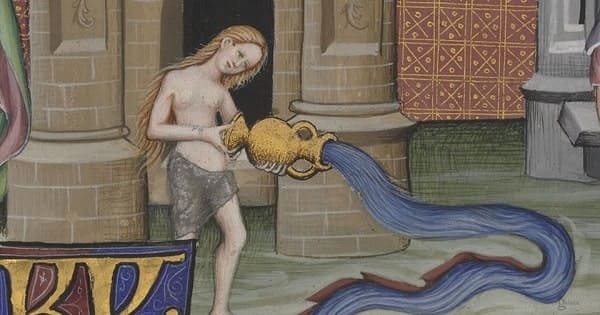
Therefore, beverages made with substances that eliminated the risk of infections due to their processes and ingredients were considered healthier, as Hildegard herself explained.
Let no one drink much in winter because the air moistens the humors, and if one were to drink much, the humors one has would loosen and produce illnesses. Drink wine and beer and avoid water if possible, as at this time, waters are not healthy due to the earth’s moisture.
Paralysis, fever, and epilepsy were some of the diseases that could be alleviated, in Hildegard’s opinion, by drinking some beer. Always in moderation, as she herself cautioned:
When one drinks more than one should and without moderation, be it wine or another liquor that can intoxicate, all their blood becomes diluted and moves disorderly, spreading through their veins in such a way that their understanding and senses also become confused, just like rivers that overflow when there is heavy rainfall and suddenly cause floods.
Life and Work of Hildegard of Bingen
In addition to leading the monastery, writing musical compositions, poems, and plays, as well as theological texts, medical books, and scientific essays, Hildegard also founded two monasteries and traveled extensively throughout Germany on numerous lecture tours. She lived to the age of 81 and practically never stopped working.

Remarkably, much of her work has been preserved to this day, which for a woman in the highly patriarchal Middle Ages is undoubtedly unique and marvelous.
Hildegard was a woman who wrote in the 12th century, and that is not the most common thing; she was someone whom men listened to and who held significant authority, primarily within the church.
She was a philosopher and scientist, as well as a Christian visionary. Her best-known work, “Scivias,” details her many visions of God that made her a kind of celebrity in her time.
Saint of the Catholic Church
Hildegard often referred to herself as an uneducated person and claimed that everything she knew came from visions granted by God.
One of her best-known miraculous abilities was healing people with water from the Rhine, using its plants and stones.
She believed that everything in the world was there for human use and that we only needed to learn how to use it.
Various branches of the Catholic Church recognized Hildegard of Bingen as a saint for nearly seven centuries, but it wasn’t until October 7, 2012, during the opening Mass of the XIII General Assembly of the Synod of Bishops, that Pope Benedict XVI granted her the title of Doctor of the Church along with Saint John of Ávila.
Saint Hildegard of Bingen is also venerated by some churches within the Anglican Communion, including the Church of England and the Scottish Episcopal Church.
Today, she is recognized as the patron saint of ecology, medicine, music, art, and even beer, being celebrated in both the Catholic Church and the Anglican Communion on September 17 of each year.
No se encontraron productos.
Recommended
- Beer Pong: How to Play and What Are the Rules of the King of Beer “Sports”
- White Chocolate and IPA Beer Truffles Recipe: Ingredients and Step-by-Step




